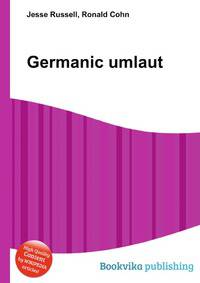Поиск книг, учебников, пособий в онлайн-магазинах

Germanic umlaut
Автор: Jesse Russell,Ronald Cohn, 160 стр., издатель: "Книга по Требованию", ISBN: 978-5-5109-5634-4High Quality Content by WIKIPEDIA articles! In linguistics, umlaut (from German um- "around"/"the other way" + Laut "sound") is a process whereby a vowel is pronounced more like a following vowel or semivowel. The term umlaut was originally coined and is used principally in connection with the study of the Germanic languages. In Germanic umlaut (also i-umlaut or i-mutation), a back vowel changes to the associated front vowel or a front vowel becomes closer to /i/ when the following syllable contains /i/, /i?/, or /j/. This process took place separately in the various Germanic languages starting around 450 or 500 AD, and affected all of the early languages except for Gothic. Данное издание представляет собой компиляцию сведений, находящихся в свободном доступе в среде Интернет в целом, и в информационном сетевом ресурсе "Википедия" в частности. Собранная по частотным запросам указанной тематики, данная компиляция построена по принципу подбора близких информационных ссылок, не имеет...
| В наличии: | ||||
|
|
Sprinter - 894 руб. |
Перейти 
|
 Лучшая цена Лучшая цена
|
|
|
|
Books.Ru - 1001 руб. |
Перейти 
|
||
| Под заказ: | ||||
|
|
OZON.ru - 998 руб. |
Перейти 
|
||
Рейтинг книги: 



 5 из 5, 10 голос(-ов).
5 из 5, 10 голос(-ов).




 5 из 5, 10 голос(-ов).
5 из 5, 10 голос(-ов).



